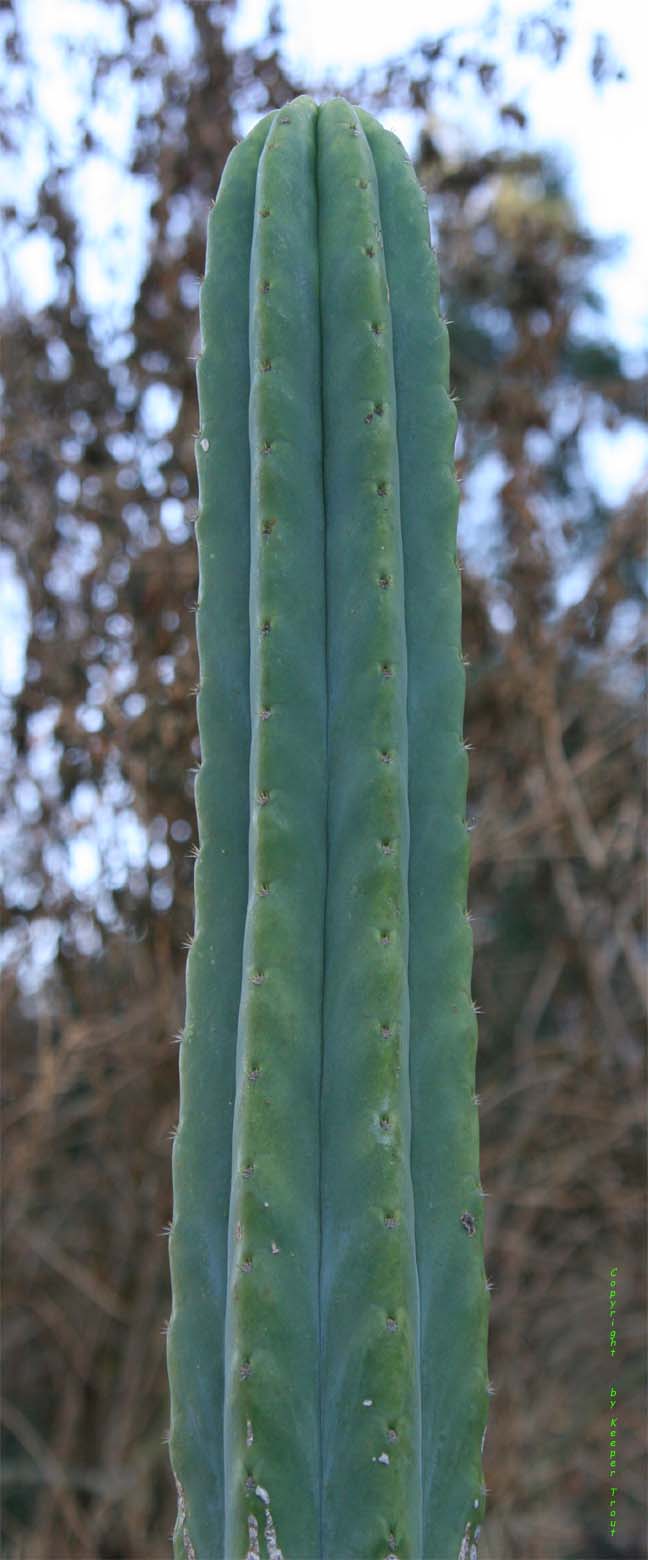It shows the Trichocereus pachanoi that was identified
and collected by Backeberg at Huancabamba.

Assuming there really is such a thing as “Backeberg’s clone” it will look like the tip above and not like the pachanot.
If anyone knows anything about the material Backeberg said he brought into horticulture I would love hearing about it. Drop me an email or snail mail.
Use your back button to return.
Or to go to:
“pachanoi or pachanot?“
-
Smith’s observations
with excerpts from some published descriptions. -
Topic 1: Backeberg’s clone
-
Topic 2: pachanoi compared to pachanot.
Additional material to ponder:

















































